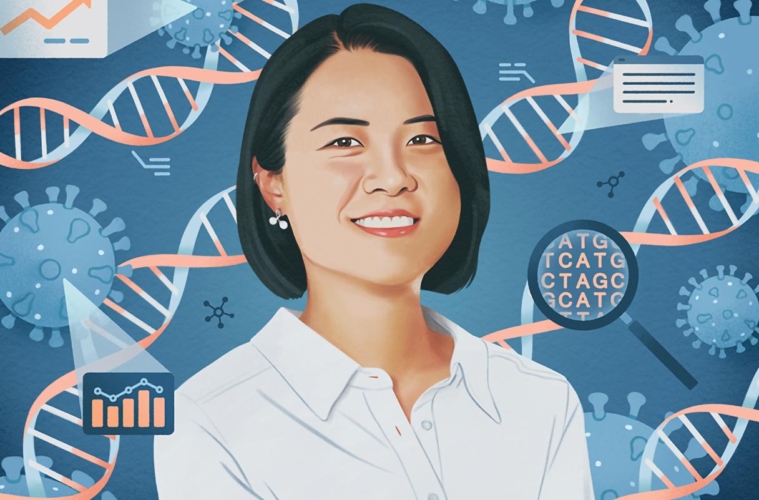When Soo Bin Kwon ’16 came to Colgate, she planned to study biology, a subject that while growing up in South Korea and attending summer science programs in Germany, she found interesting and full
of meaningful problems to solve. At the same time, she didn’t like the uncertainty of experiments. “It’s a lot of patient work, pipetting in the lab and waiting for results, without any guarantee of success,” she
says. During her first semester at Colgate, however, she took a computer science class with Professor Michael Hay and felt instantly at home. “The inputs and outputs were very clear — this is what you are given, and this is what you should be getting as the outcome,” she says. “The problem-solving aspect felt like my thing.”
Now, Kwon is both coding and helping solve meaningful health problems as a senior bioinformatics scientist at San Diego–based company Illumina. “I would describe bioinformatics as the intersection between computer science, statistics, and biology,” she says. Kwon looks at infectious diseases, coming up with algorithms to help biomedical organizations identify and track viruses and other pathogens. “It all started with COVID-19,” Kwon explains. During the early days of the pandemic, some companies developed the now-familiar PCR (polymerase chain reaction) tests to quickly identify individual infections. Illumina took a longer view, developing sophisticated genetic sequencing and high-throughput techniques to track variants of the disease as they spread through the population.
“The basic idea is to take any biological sample — it could be blood, saliva, skin cells, or even wastewater — and shred it up into small pieces,” Kwon explains. “The technology we use then reads those small pieces of DNA and tries to stitch them together into sequences we can compare to existing known sequences.” It’s Kwon’s job to help create the software that can analyze the data and give customers an accurate reading of what pathogens and genetic variants are present in their sample. “You can choose what kind of analysis you want, and then minutes or hours later our software will provide graphs and tables to help you make sense of what’s in your sample.”
Kwon started using bioinformatics in her senior year at Colgate as a research assistant in the lab of associate biology and mathematics professor Ahmet Ay. There she used data analytics to help identify a genetic control switch in zebrafish embryos responsible for proper development — a finding that could have repercussions for understanding human birth defects. Along with Ay, she also collaborated with biology professor Krista Ingram to develop a mathematical model to analyze genes that control people’s circadian clock and published their findings in Nature (Scientific Reports).
She cites the papers she co-authored as instrumental in getting her into a bioinformatics PhD program at UCLA, where she used computational biology to examine the differences in mouse and human genomes. When the pandemic hit in 2020, she and her adviser developed tools to examine differences in viruses affecting humans and other animal species, helping to better understand coronaviruses and leading to her current role in examining infectious diseases.
Among other applications, Illumina’s technology is used to sequence genetic information for commercial providers such as Ancestry and 23andMe, optimize genetically modified crops, and study diseases ranging from cancer to rare genetic disorders. Kwon’s work on infectious diseases helps aid biomedical researchers and public health officials in genomic surveillance by analyzing wastewater and other samples to track their trends. “It could be COVID or other diseases — even influenza, which continues to evolve and could one day become more pathogenic than it is today,” she says. Though her work is still oriented toward basic research, she likes that she’s able to apply it in real time — allowing her to tackle those meaningful problems just as she always wanted to do. “If there’s monkeypox on the news, for example, we gather whatever information we can and collaborate with public health labs to give our customers what they need to study it,” she says. “My work feels very connected to the rest of the world. I can contribute something.”

